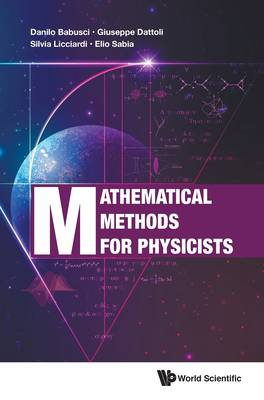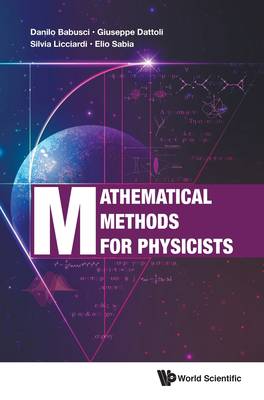
- Afhalen na 1 uur in een winkel met voorraad
- Gratis thuislevering in België vanaf € 30
- Ruim aanbod met 7 miljoen producten
- Afhalen na 1 uur in een winkel met voorraad
- Gratis thuislevering in België vanaf € 30
- Ruim aanbod met 7 miljoen producten
Zoeken
Mathematical Methods for Physicists
Danilo Babusci, Giuseppe Dattoli, Silvia Licciardi, Elio Sabia
Hardcover | Engels
€ 195,45
+ 390 punten
Uitvoering
Omschrijving
The book covers different aspects of mathematical methods for Physics. It is designed for graduate courses but a part of it can also be used by undergraduate students. The leitmotiv of the book is the search for a common mathematical framework for a wide class of apparently disparate physical phenomena. An important role, within this respect, is provided by a nonconventional formulation of special functions and polynomials. The proposed methods simplify the understanding of the relevant technicalities and yield a unifying view to their applications in Physics as well as other branches of science.The chapters are not organized through the mathematical study of specific problems in Physics, rather they are suggested by the formalism itself. For example, it is shown how the matrix formalism is useful to treat ray Optics, atomic systems evolution, QED, QCD and Feynman diagrams. The methods presented here are simple but rigorous. They allow a fairly substantive tool of analysis for a variety of topics and are useful for beginners as well as the more experienced researchers.
Specificaties
Betrokkenen
- Auteur(s):
- Uitgeverij:
Inhoud
- Aantal bladzijden:
- 480
- Taal:
- Engels
Eigenschappen
- Productcode (EAN):
- 9789811201578
- Verschijningsdatum:
- 4/10/2019
- Uitvoering:
- Hardcover
- Formaat:
- Genaaid
- Afmetingen:
- 170 mm x 244 mm
- Gewicht:
- 957 g

Alleen bij Standaard Boekhandel
+ 390 punten op je klantenkaart van Standaard Boekhandel
Beoordelingen
We publiceren alleen reviews die voldoen aan de voorwaarden voor reviews. Bekijk onze voorwaarden voor reviews.











